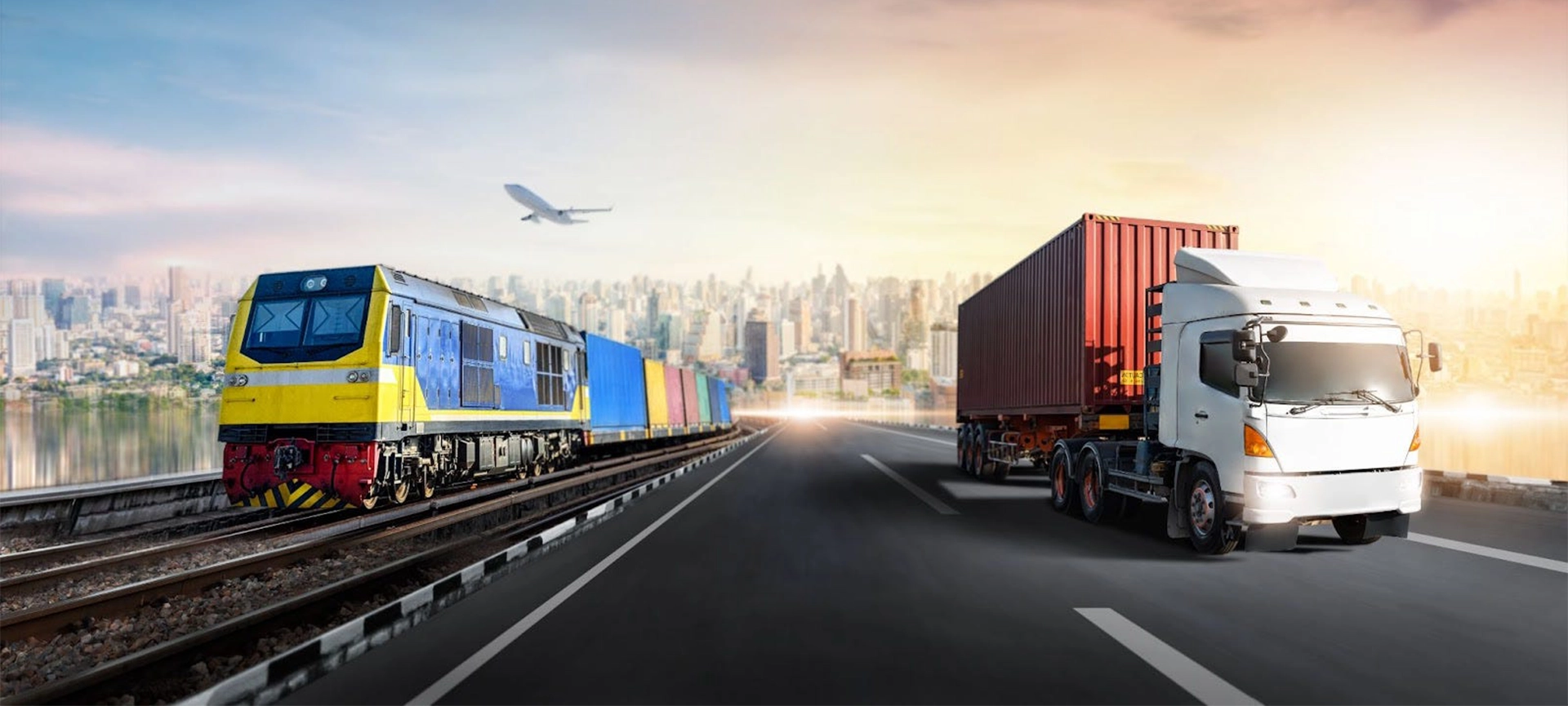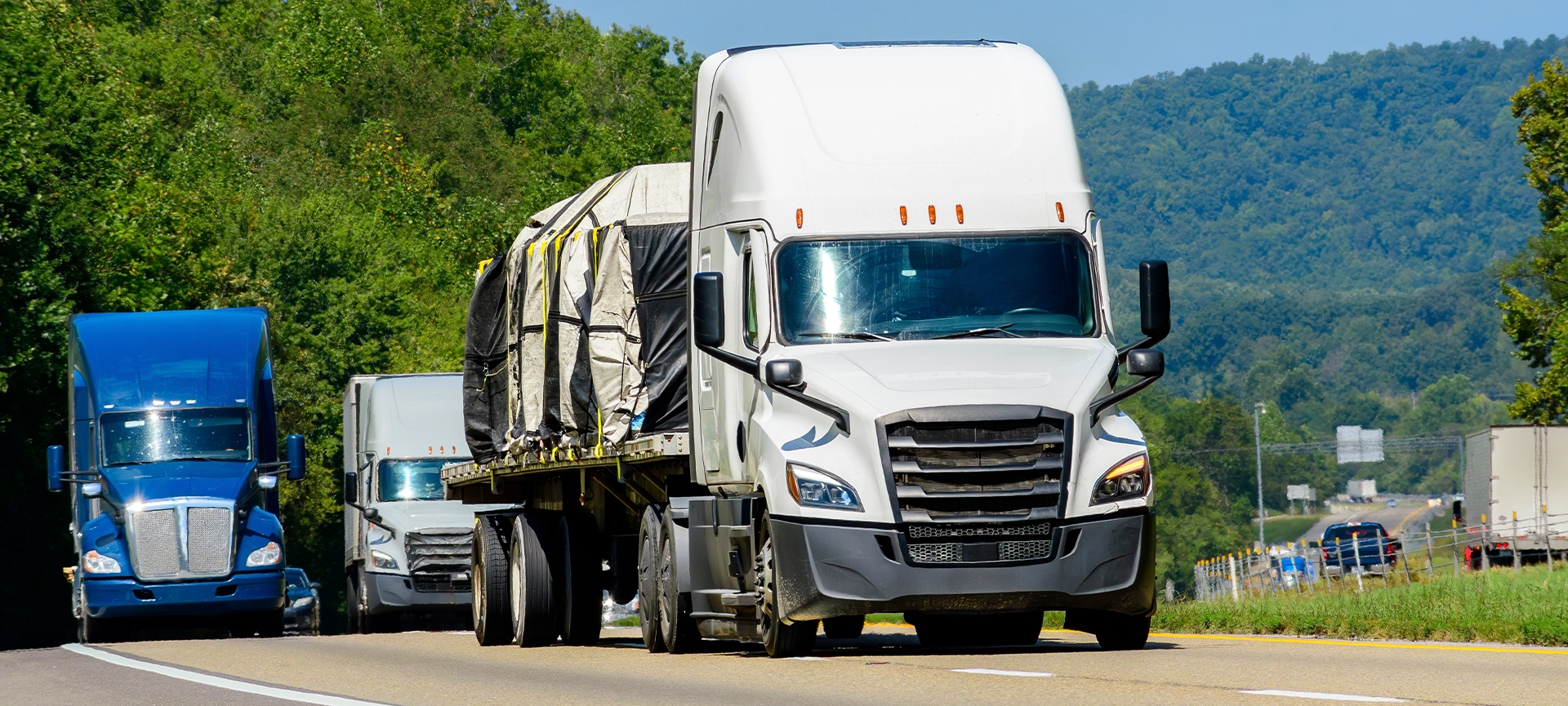When it comes to moving freight across North America, businesses often weigh one key question: train vs. truck—what is more efficient? While both rail and truck transport have their place in the shipping industry, they’re far from equal when it comes to flexibility, delivery time, and overall service.
At RoadLINX, we specialize in reliable, customized, full truckload freight and LTL shipping services across Canada and the United States. And we know firsthand that in most real-world shipping scenarios, truck freight delivers more value, control, and speed than rail.
This article compares the pros and cons of railroads vs trucks, breaks down train freight rates, and answers key questions like:
- How much goods are shipped by truck vs train?
- Are trains more efficient than trucks?
- Which mode offers the best delivery pricing?
Let’s dive in.
Truck vs. Train Freight: Quick Comparison
| Factor | Truck Freight | Train Freight |
| Delivery Speed | Faster for short to mid distances | Slower, often delayed by rail schedules |
| Door-to-Door Service | Yes (with liftgate and local access) | No—requires transfer to truck |
| Flexibility | High—any route, any time | Low—limited to rail infrastructure |
| Pricing | Competitive for LTL & FTL | Lower for bulk, long-haul shipments |
| Fuel Efficiency | Moderate (improving with new tech) | Higher (especially per ton-mile) |
| Tracking & Visibility | Real-time, customizable | Limited tracking options |
| Best For | Consumer goods, perishables, urgent freight | Coal, lumber, bulk raw materials |
How Much Goods Are Shipped by Truck vs Train?
In Canada and the United States, trucks move about 70–75% of all freight by volume. Despite rail’s efficiency on paper, it’s limited by geography and infrastructure. Trains can’t pull up to a warehouse, a construction site, or a local retailer—and that’s where truck services win.
Train vs truck? When it comes to daily commercial shipping, trucks are the default choice for most businesses.
Advantages of Truck Transportation
Let’s break down the advantages of truck transportation compared to rail:
1. True Door-to-Door Delivery
Trucks go where trains can’t. With options like liftgate services and direct residential or commercial delivery, there’s no need to coordinate transfers from railyard to warehouse.
Related Article: What Is a Liftgate Delivery Service? How It Works
2. Fast, Flexible Scheduling
Need to ship tomorrow? With expedited shipping, trucks can hit the road on your timeline. Trains operate on fixed schedules and are subject to delays.
3. Smaller Loads Accepted
With LTL shipping services, you can ship partial loads without paying for unused space. Rail favors bulk shipping and doesn’t offer the same flexibility.
4. Easier Licensing & Customs
Cross-border trucking is streamlined with proper licenses and experienced brokers. At RoadLINX, we make shipping between the United States and Canada simple with transparent rates and fees.
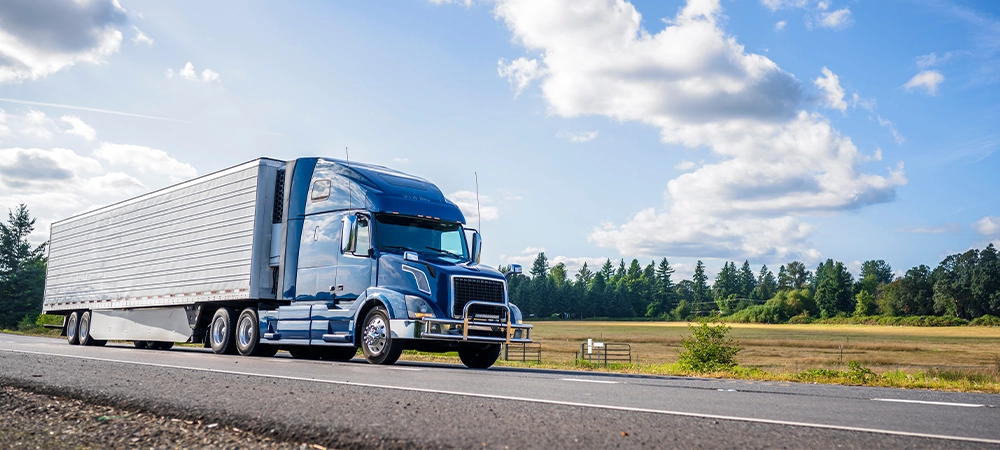
Disadvantages of Truck Transportation
Even the best service has some limitations. Here are the disadvantages of truck transportation:
- Higher fuel cost per ton-mile than rail (though modern trucks are closing that gap)
- Subject to road traffic and weather conditions
- Heavier environmental impact, unless mitigated with clean tech and smart routing
But in practice, these drawbacks are manageable—especially with experienced logistics partners like RoadLINX, who use efficient routing, load optimization, and real-time tracking to reduce delays and emissions.
Advantages of Rail Transportation
It’s only fair to cover both sides. Here are the advantages of rail transportation:
- Lower rail shipping cost per ton-mile, especially for bulk loads
- Higher fuel efficiency per ton moved
- Ideal for long-haul shipping of raw materials (grain, coal, chemicals)
- Low labour cost per load
So, are trains more efficient than trucks in some situations? Yes, but mainly for high-volume, non-urgent, long-distance shipments.
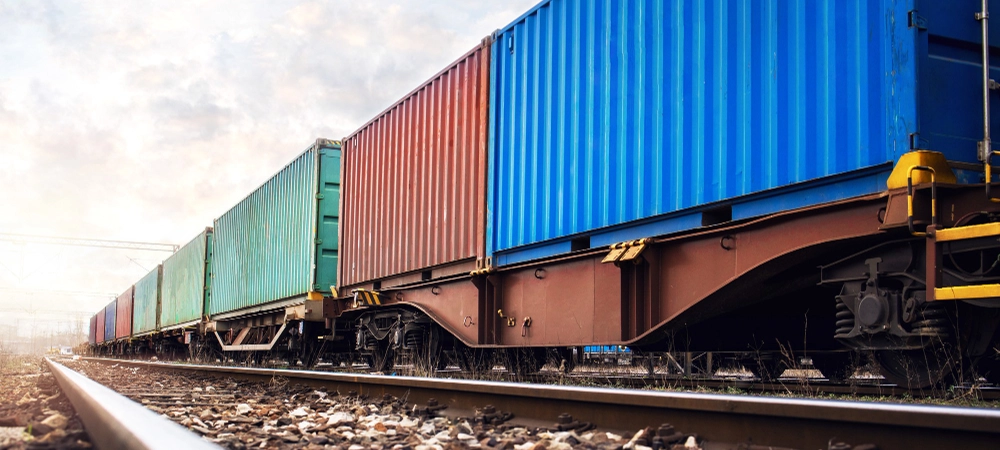
Disadvantages of Rail Transport
There are also several disadvantages of railroads:
- No door-to-door delivery—must transfer to truck
- Slow transit times—often several days longer than trucks
- Limited availability in remote areas or smaller cities
- Fixed schedules with no flexibility for urgent deliveries
- Additional handling fees for transfers and yard storage
- Complicated licensing or paperwork for cross-border rail
When clients ask, “Which mode of transportation has the lowest pricing for high volume materials?”—rail might win on cost, but only if the timing and transfer logistics work for you.
Train Freight Rates vs Trucking Costs
| Cost Factor | Train Freight (Rail) | Truck Freight |
| Rail shipping cost per ton-mile | $0.03–$0.05 CAD (for bulk loads) | $0.06–$0.10 CAD (varies by load type) |
| Delivery to customer location | Not included (requires a separate truck) | Included (direct delivery) |
| Storage/Yard Fees | Often required at terminals | None for direct delivery |
| Container rail freight rates | Lower for large-volume contracts | More flexible for mixed cargo |
| Customization and add-ons | Limited | High (liftgate, flatbed, expedited) |
So, how much does it cost to ship freight by rail? It has a lower per ton-mile rate, but when you factor in extra transfers, delays, and limited access, trucking often makes better financial and logistical sense.
Train Fuel Efficiency vs Truck: The Real Numbers
On average, freight trains can move 1 ton of goods over 700 km per gallon of fuel, while trucks average about 200–250 km per gallon per ton.
But again, that’s ideal conditions.
In real-world shipping, trucks use shorter routes, fewer transfer points, and deliver directly. So, while train fuel efficiency vs truck looks better on paper, the end-to-end efficiency of trucking wins for most shippers.
Train vs Ship Efficiency: What’s More Effective?
When comparing train vs ship efficiency, ships typically outperform both trains and trucks in terms of fuel use per ton-mile, especially for transoceanic freight. However, ships are limited to port-to-port shipping and require additional transport (often by truck or train) for final delivery.
For land-based logistics in Canada and the United States, rail and truck remain the most practical options, with trucks providing the highest flexibility and service coverage across both urban and rural destinations.
How Much Does a Fully Loaded Freight Train Weigh?
A standard North American freight train can carry 10,000 to 15,000 tons across hundreds of cars. Impressive, yes—but only practical for bulk industries like mining, agriculture, or fuel. If you’re shipping electronics, furniture, or retail goods, that volume isn’t relevant.
When to Choose Truck Over Train
- You need fast delivery
- You’re shipping less than a full container
- You want door-to-door service
- Your destination isn’t near a rail line
- You want live tracking and full control
- You need specialized services like flatbed freight or liftgate delivery
Related Article: Choosing the Right Flatbed Trailer for Your Shipping Requirements: A Comprehensive Guide
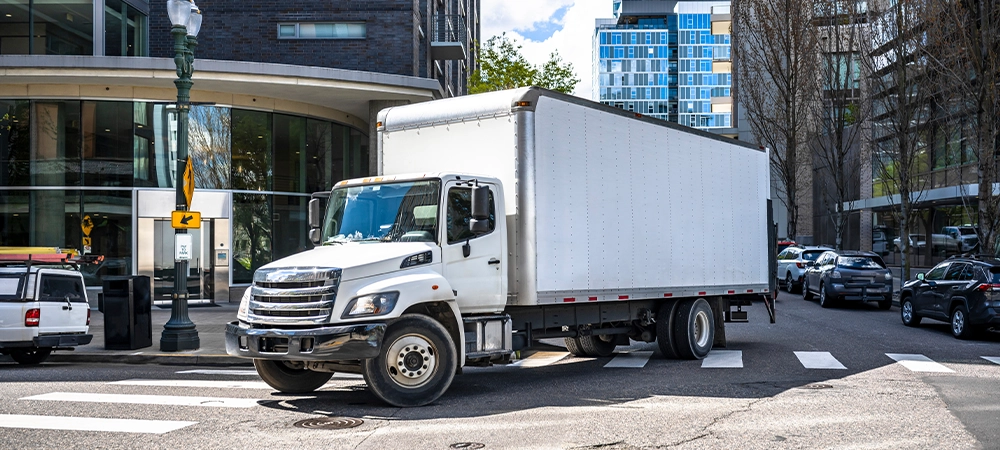
Why RoadLINX is Your Best Trucking Partner
We’re not just another trucking company in Toronto—we’re your strategic logistics partner. Our services include:
- FTL and LTL freight solutions across Canada and the U.S.
- Expedited and same-day shipping options
- Specialty equipment, including liftgate trucks and flatbeds
- Fair pricing, transparent rates, and no surprise fees
- Experience with licensing, customs, and cross-border compliance
Whether you need to move a single pallet or a full truckload, we deliver speed, reliability, and real value.
Build Smarter Shipping Strategies Today
When comparing a train vs semi-truck, the decision depends on your cargo, timelines, and destination. For most businesses, truck freight offers more advantages—especially when speed, flexibility, and door-to-door service matter.
If you’re tired of dealing with rail delays or complicated transfer logistics, it’s time to upgrade.
Need fast, reliable freight shipping in Canada or the U.S.? Contact RoadLINX today for a free quote on FTL, LTL, or expedited shipping. Our team will help you build a custom plan that gets your freight delivered on time, every time.

